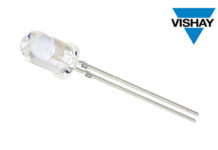
- Infineon takes a pioneering role in the semiconductor industry and creates transparency for its customers regarding the climate impact of individual product families
- Infineon aims to eventually cover its entire product portfolio
- Providing carbon footprint data at the product level is another major milestone in Infineon’s sustainability strategy
Infineon Technologies AG will provide customers with comprehensive Product Carbon Footprint (PCF) data, taking a pioneering role in the semiconductor industry. The company is committed to eventually providing PCF data for its entire product portfolio, starting now with about half of its portfolio. The initiative will empower customers to advance their own sustainability goals and reduce their carbon footprint effectively along the entire supply chain. The Product Carbon Footprint is a metric that quantifies the greenhouse gas emissions associated with an individual product, allowing the comparison of different products’ climate impact. Infineon will share more insights with customers at the upcoming PCIM trade fair in Nuremberg, Germany, from 11 to 13 June 2024.
“By providing comprehensive Product Carbon Footprint data, we are driving the vision of a net-zero society and empowering our customers to reduce carbon emissions even more effectively,” says Elke Reichart, Member of the Management Board and Chief Digital and Sustainability Officer at Infineon. “Infineon is taking a leading role in carbon transparency by committing to include the entire product portfolio over the coming years. This underlines our ambition to be a leader not only in terms of technology, but also sustainability.”
The specific data Infineon provides on its individual products is essential for the growing number of customers who want to increase transparency on their own carbon footprint. Moreover, it supports informed decision making to leverage additional potential for reducing emissions along the value chain.
In the absence of established industry standards, Infineon has developed a robust methodology to calculate the Product Carbon Footprint, incorporating customer needs and best practices. Infineon includes emissions from raw materials and supplies, its own manufacturing processes, manufacturing partners and transportation to the customer (“from cradle to gate”). This means that the Product Carbon Footprint reported by Infineon covers scope 1 and 2 emissions as well as scope 3 emissions from suppliers and manufacturing partners, all the way to the customer’s gate. The Product Carbon Footprint is expressed in kilograms of carbon dioxide equivalent (kg CO 2e).
Infineon has published the assessment of reference product families on the Infineon website.
Driving transparency goes hand in hand with Infineon’s strong commitment to decarbonization and digitalization. Infineon’s products make a major contribution to the global energy transition and thus to a net-zero society. They are used in solar and wind power plants, electric cars and increase energy efficiency in numerous applications, including AI data centers. Over their lifetime, the company’s chips overall save 34 times the amount of CO 2e emitted during their production.
Breaking the carbon footprint down to the product level is another major milestone in Infineon’s sustainability journey. Infineon has already pledged to achieve carbon neutrality by 2030 for direct and indirect emissions (scope 1 and 2). Last year, the company additionally committed to setting a science-based target encompassing supply chain emissions (scope 3) as well.
















